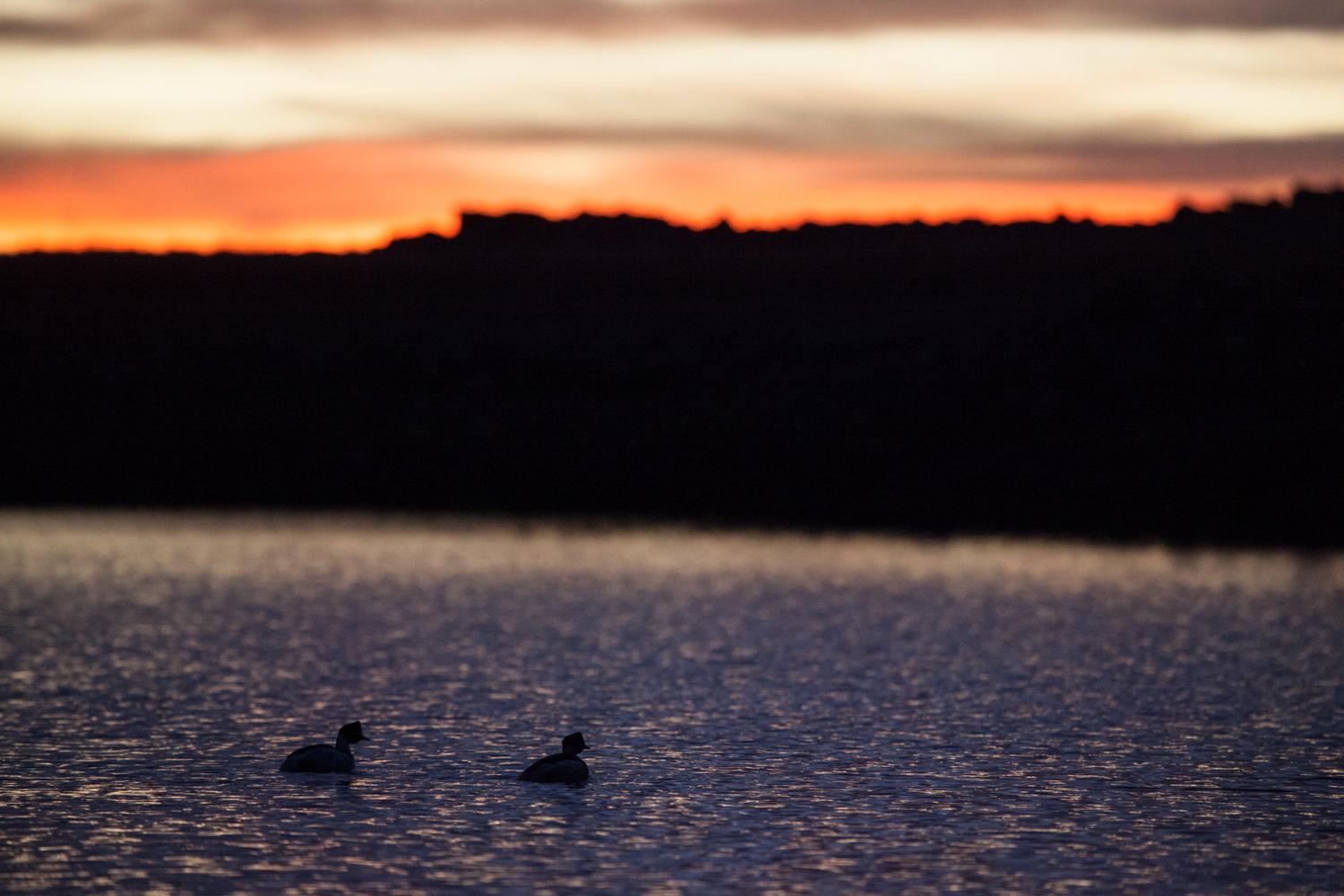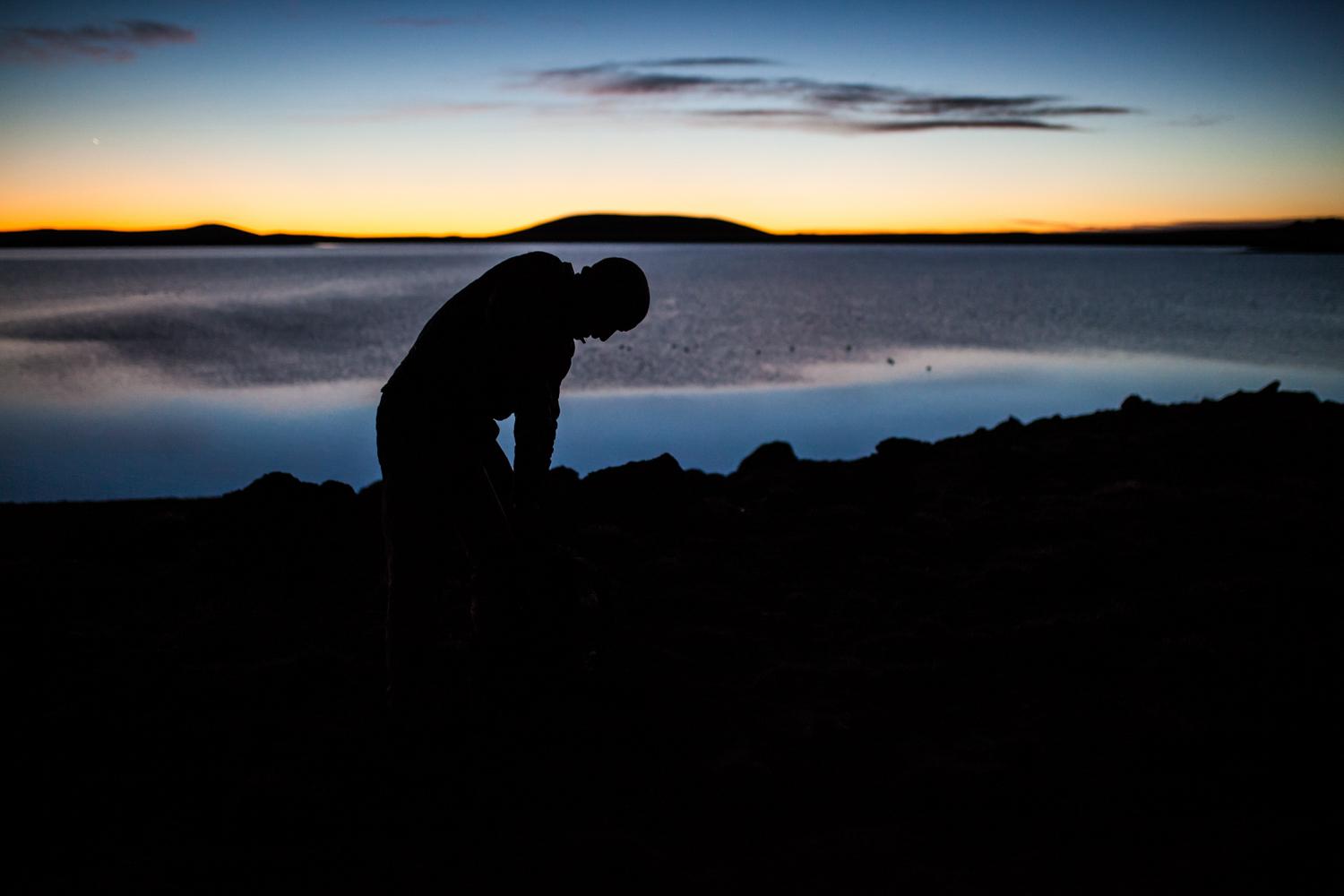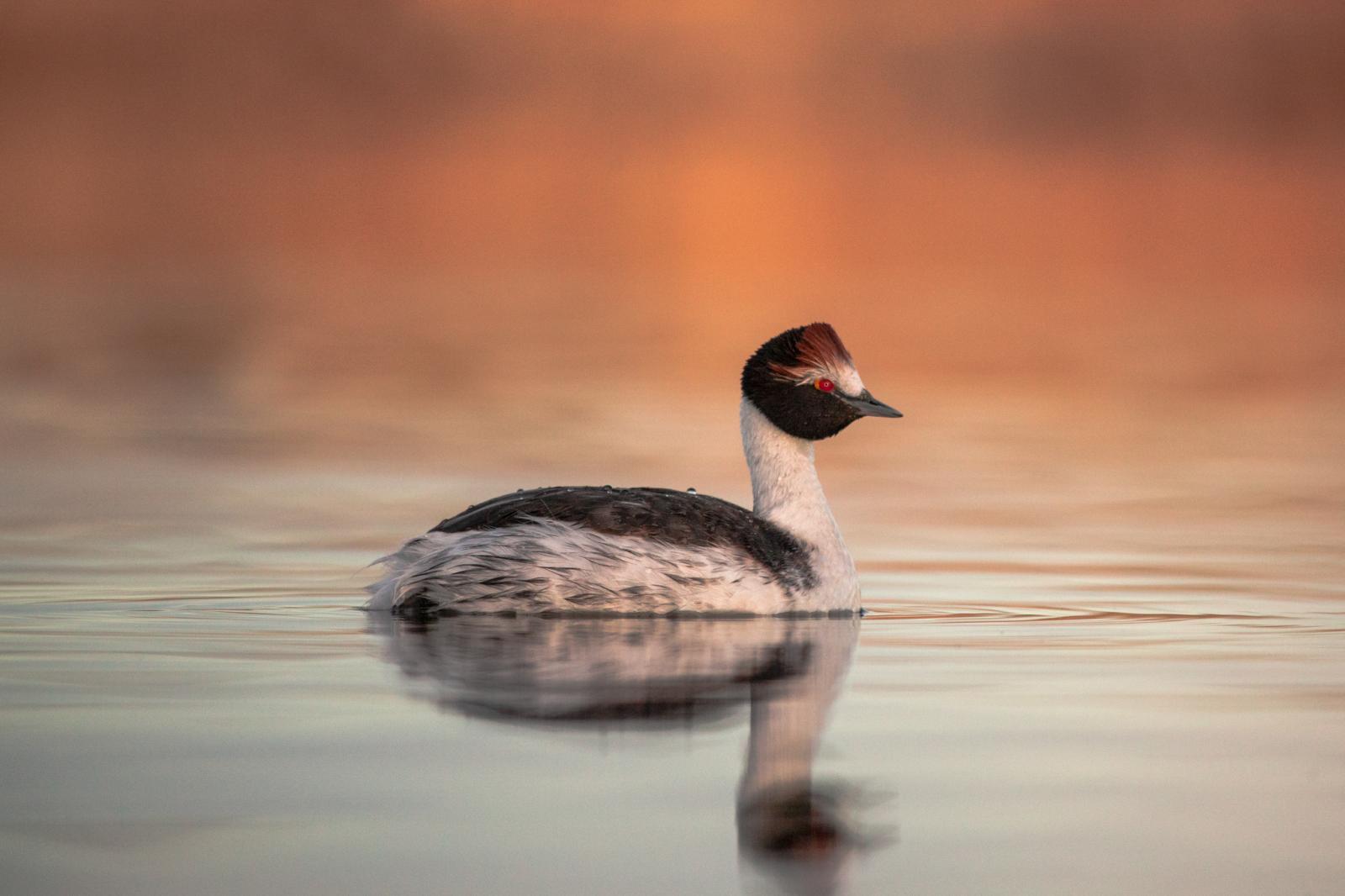As a photographer, the Hooded Grebe Project meant a huge shift in my perspective. After documenting several conservation related issues, specially the wildfires in Bolivia´s amazon in 2019 my focus started to shift rapidly. Back in 2020, amid the Covid-19 pandemic, I enrolled myself as a volunteer at the project with the intimate conviction that I wanted to focus my work as a storyteller to conservation efforts.
My first contact with that new environment was not even close to what I imagined. A desert-like place, cold and with powerful winds made a huge impact on me. An almost empty place that is never silent where every single step is hard, harvests a big hope for an endangered species.
There, down south, where life is very difficult for most people lives the Hooded Grebe (Podiceps gallardoi). This bird was discovered in 1974 and it's in grave danger of extinction. Led by the Whitley Award winner Ignacio “Kini” Roesler, a team of biologists, veterinarians, field technicians and volunteers, an amazing conservation work has been done for the past decade in the midst of an extremely hostile and inaccessible environment. The Hooded grebe population has decreased by 80% in just a couple of decades, leaving only around 800 individuals left.
That first trip was a great three months experience and I came back home with the certainty that I had now a sense of purpose, some sort of duty with these people. They work so hard all year round to save a whole species that lives exclusively at that place, with limited resources, under extreme weather and leaving their own families for the greater good. So it hit me. I should become a sort of bridge between the project and the audiencies that may support it.
So I went back this past summer, but this time, exclusively as a photographer. And the time was crucial as new hope arose with the use of artificial nesting platforms, rafts installed in the plateau lagoons where the birds live, so that the grebes can nest despite the shortage of Vinagrilla (Myriophyllum quitense), a plant they use to build their breeding colonies. This past summer the grebes used the platforms to install their nests for the first time and new eggs were identified a few days later. Since the beginning of the project everytime the grebes built a colony, the team camps right next to it to guard it from predators 24/7. They also control invasive species that threaten successful reproduction of the grebes and for the past 6 years have been trying to develop a protocol to raise them artificially in incubators. Every time a grebe loses an egg because of the wind they pick them up and take them back to base. The hardest challenge has been to replicate the way their parents feed. Every Hooded grebe that was born in captivity has died before it was old enough to be released. Despite the unsuccessful tries, the hope that they can release a hooded grebe soon clashes with the dream that this is not necessary. This past season was the first time in four years that hooded grebes were born and despite that didn´t have a huge impact in their demographics it shows a glimpse of hope.
From the moment I started photographing the work done to protect the Hooded Greb, and despite my lack of economic resources to do so, I convinced myself that this should be a long term photo project. I'm certain that it's urgent to tell this story because global warming is the greatest enemy of this amazing species, endemic to the plateau lagoons of Argentinian Patagonia.
My project is to tell the human story hidden behind the bird. Tell about the scientists, the efforts they make, the huge difficulties of traveling around that area where shoes or vehicle tires last a lot less than they usually do. This grant would mean the possibility to keep spending time at their side, documenting the struggle of science to keep this environment safe. For the next stage I mean to focus a lot more on intimacy and relationships by spending more time in the field with the team. The photographs that are part of this submission are part of the early editing stages after spending a total of 7 months in Patagonia. Each and every single day, their enormous effort made by this group of young people helps the Hooded grebe thrive. And I'm sure their story is also worth telling.



































